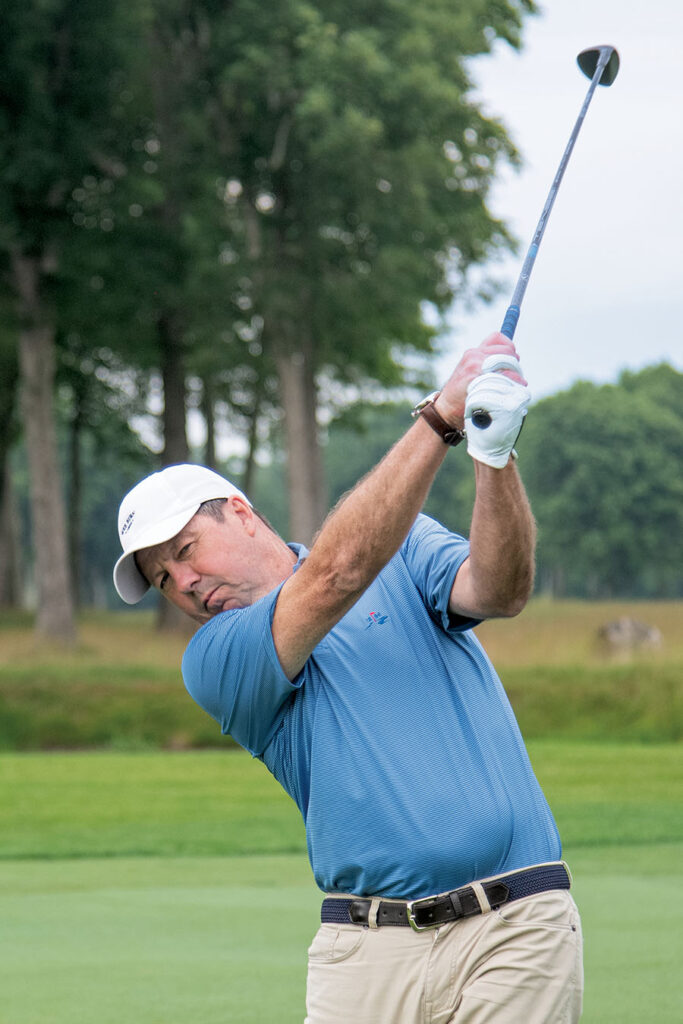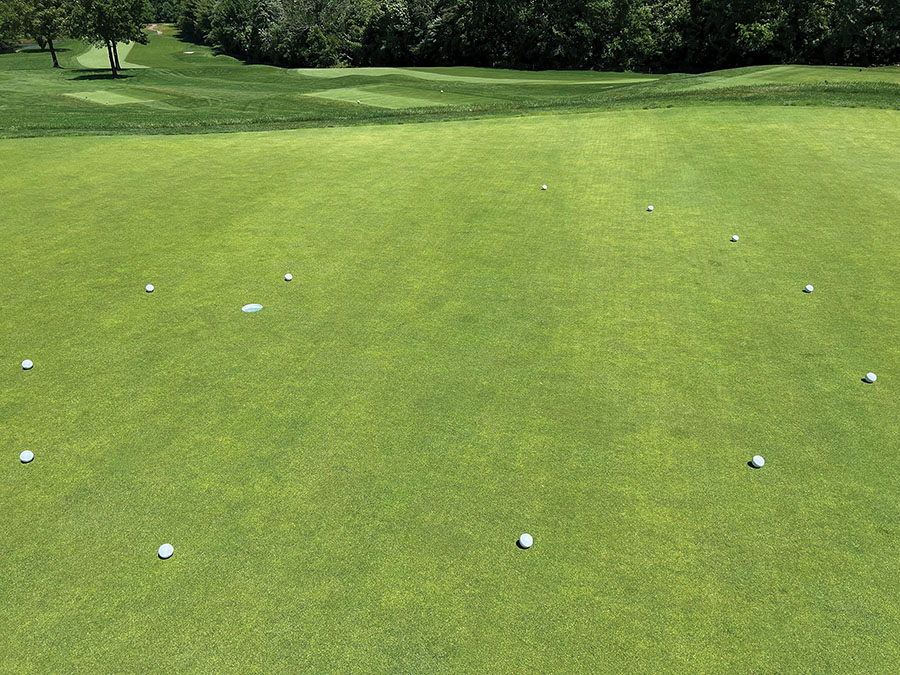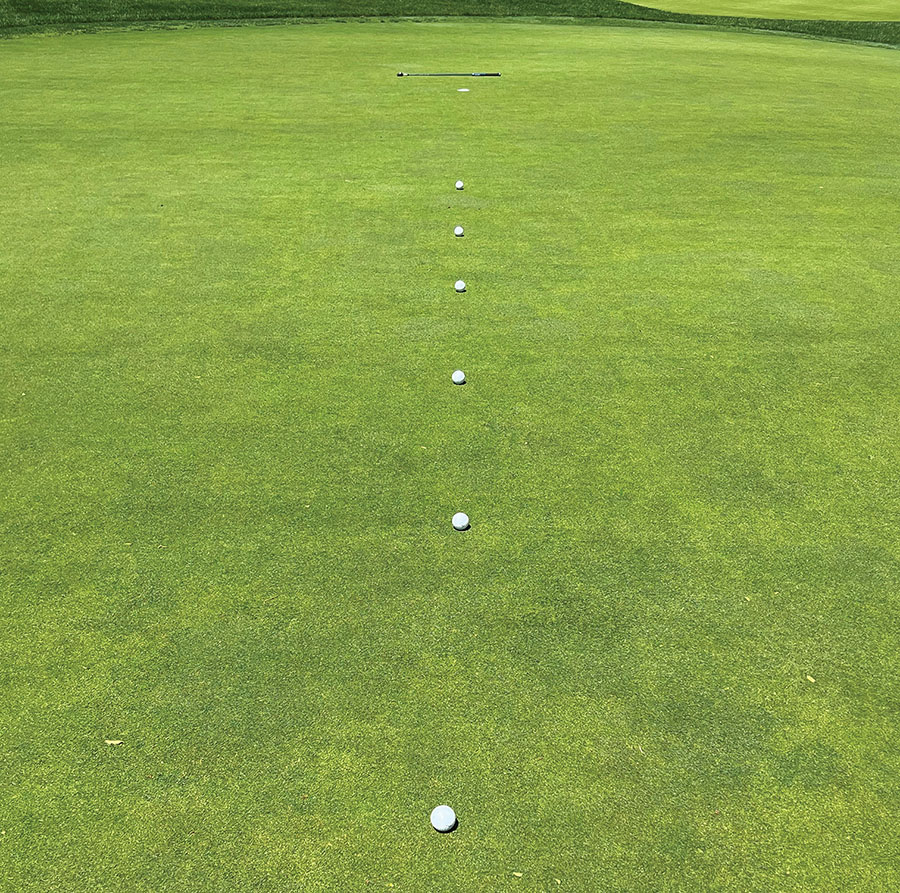Finding Mental Toughness on the Golf Course
Mind Set | written by: SAM WILEY, PGA Head Golf Professional, Wee Burn Country Club
photo by: BAMBI RIEGEL | riegelpictureworks.com

“I was hitting it great on the range…” “Why can’t I take my driving range swing to the golf course?” If you have ever uttered these words, this article is for you.
Home on the Range with Block Practice
The range comes first. Whether following a lesson or during regular stops in your never-ending quest to improve, the driving range, with its opportunities for Block Practice with a conscious mind, is key.
Block Practice with a conscious mind means hitting the same club with intention and awareness at the same target over and over with no changes. This is critical when you are working on a swing thought and trying to incorporate it into your golf game. Block practice with a conscious mind is also very helpful in identifying your “miss patterns.” Amateur golfers rarely miss long of the hole. That’s because most golfers make club selections based on how far they hit their best shot with that particular club, rather than their typical shot. Once you know that your miss will most likely fall short of the hole, determine if it tends to be left or right of the flag. When you understand your miss patterns you can make the necessary adjustments.
Because the driving range is almost always flat and the golf course is anything but that (except for the teeing ground), I recommend seeing if you can find some uneven ground from where you can hit. Sometimes facilities have an uneven lie training aid to best simulate on-course conditions.
Routine Rewards
Golf is one of the few sports we play where the ball is not moving so we tend to settle into a more static stance …and then we start thinking …and overthinking, as we go through our mental checklist. Whether you are trying to break 100, 90, 80 or win the club championship for the first time, a consistent routine on full swings and in the short game will help ease your mind from the nerves that can come with overthinking, and give you confidence that your hard work and practice will be there for you on the course when you’re under the gun. However, like your strokes, developing and perfecting a routine that will be effective on the golf course requires repetition and practice.
Random Practice
Now what? You have your swing. You know your miss patterns. You’ve developed a routine. How do you get into what elite athletes call the “Flow State” where you start to transfer the conscious technical training into more subconscious swinging. Without this transfer, you end up playing golf swing, rather than golf. Enter what I call Random Practice. As opposed to Block Practice, Random Practice focuses on quality over quantity of golf balls hit on the driving range, chipping green, practice bunker and putting green. Random, as the name suggests, involves changing clubs and targets more frequently. It doesn’t have to be with every ball hit but this is also where you can begin to incorporate your pre-shot routine.
Putting it all Together with Performance Practice
The last leg of the process to unlock your peak play on course is what I call Performance Practice—games and challenges. Performance Practice involves using your full routine; changing your club and target with every ball; and trying to “win” your way off of the range or the putting green. I have accumulated a number of these games and challenges from many different places over the years. Here are a few:

• Spiral drill for putting: Begin one foot away from the cup and spiral out a total of 12 golf balls moving each ball one foot farther from the hole. (Above.) Track how many you can make in a row or overall. Keep a record and aim to break it the next time you do this drill.

• Jordan Spieth ladder drill: Start by placing the first of nine golf balls 15 feet from the hole. Then place another every three feet back from the cup up to 39 feet. Place a club three feet behind the hole. (Above.) This creates a safety zone from the front edge of the hole up to three feet past. Up to 30 feet, give yourself a par for anything inside the safety zone, a bogey for shots short of the cup or if the ball hits your club, and a birdie for a hole out. Once you get to 30 feet, the safety zone for a par expands to one foot short of the hole. Keep score in relation to par. The challenge is to beat it the next time you practice.
• Full swing golf course simulation: Play your favorite course on the driving range by identifying boundaries of the fairways of that course in this practice space. Hit your tee shot and track whether or not it would have landed in the fairway (around 30 yards wide). Hit a second shot at a “green” or target. Knowing your miss patterns, was your second shot successful and did it miss on the correct side? Do this 18 times, simulating each of the different holes on your favorite course. Journal your rate of success and try to beat it the next time you play this game.
Practice does not make perfect. Practice makes permanent. Perfect practice makes perfect. The more engrained you make your routine, the stronger mentally you will be when the pressure is on. But remember always, in golf, as in life, you get what you give and don’t be too hard on yourself when life’s demands take you from working on your swing. Accept the gifts of this game however they come your way.

